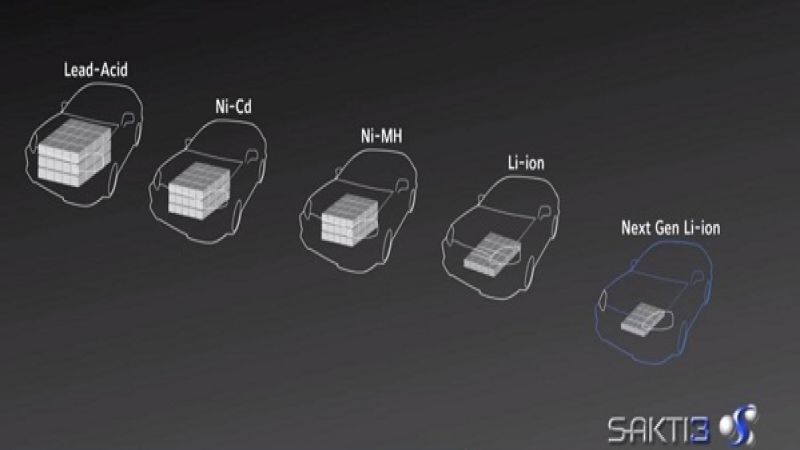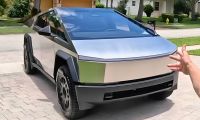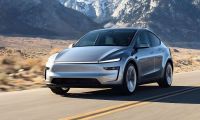Stop me if this story sounds familiar. Or rather don’t, because even though I know you’ve heard it before, tales of battery breakthroughs like this one deserve fair consideration no matter how many make the headlines. A Michigan-based startup called Sakti3 has unveiled a solid-state battery that, if commercialized, could double the range of current electric vehicles (via Scientific American).
The company
For starters, some background on Sakti3. The company is a University of Michigan engineering department spinoff that has been operating in a stealth mode of sorts for the better part of 7 years, founded by a veteran team that has published over 80 papers on battery technology.
The company has some illustrious backing, with investment support from GM Ventures and Khosla Ventures. It has received over $30 million for its battery technology since its inception.
Sakti3 was formed as a result of mathematical optimization algorithms that showed co-founder and CEO Ann Marie Sastry and her team that the liquid electrolyte in today’s lithium-ion batteries is the weak link. Replace the delicate liquid electrolyte with a more stable solid-state electrolyte, and much of the complex and heavy packaging necessary in current batteries goes away.
The technology
That solid-state electrolyte has been hotly pursued for many years, with no results to show for it. Even Toyota is researching solid-state batteries. Sakti3 claims it has solved the riddle, achieving an energy density of 1,143 watt-hours per liter. Verified in “several” tests but not by any independent entities, this number would more than double the current state-of-the-art in lithium-ion batteries.
The material the company is using for the electrolyte, which will double as the electrode separator, is a trade secret, as is the positive electrode – which Sastry claims is a “very well understood electrochemistry.” The anode, or negative electrode, of the Sakti3 battery is a typical metallic-lithium composition.
Sakti3 claims its cells could be manufactured on a large scale, albeit differently than current cells. The key is the recent improvement in flat-panel television and solar PV manufacturing; Sakti3 uses a similar thin-film deposition process whereby the layers of the cell are deposited atop one another in sequence.
Sastry claims that, despite the need for a vacuum chamber in the manufacturing process, the cheap tooling and very high throughput will enable significant cost reductions. How much? Sakti3 believes it will be able to achieve the fabled $100/kWh target that would make electric vehicles cost-competitive with gasoline models.
Is this the one?
Could Sakti3 be the company that at last delivers on its promises of a revolutionary battery that will forever change the landscape of the consumer electronics, electric vehicle, and stationary storage industries? As always, the answer is maybe – but even if the technology makes it to commercialization (which is highly unlikely, given the history of the advanced battery industry) it will not be for a long time.
The major obstacles Sakti3 still has to clear: produce consistent energy density results, prove sufficient cycle life, and eliminate safety concerns - all at scale. It is worth noting that a Canadian company called Avestor actually produced solid-state batteries, but was driven into bankruptcy when its batteries began exploding in AT&T cable boxes.
It certainly seems that Sakti3 is capable of addressing these concerns. The prototypes were allegedly made on scalable equipment, and Sastry isn’t worried about cycle life or safety: “We expect great cycle life” due to the relative simplicity of the chemical reactions within the Sakti3 cell, and “Solid state eliminates the riskiest part of the battery cell.” Those two statements certainly appear to be accurate, but it remains to be seen if the company can make it happen in practice.
If Sakti3 is like most advanced battery companies and research projects, its revolutionary results in the lab will never make it to commercialization. Electric vehicle advocates must hope, then, that Sakti3 is different from the rest. Even if that is the case, cell phones and laptops will be the first in line to get the new solid-state cells, so the EV industry will have to be very patient.













Comments
We have heard these claims
Permalink
We have heard these claims before for this same company but a working model is no where to be seen. Toyota is also working on this same type of battery even as they bad mouth BEVs. Tesla is also working on a plant that might be able to produce a battery at $100/kwh but it might be much heavier. Would love to see this technology make it to the road.
So would I Mike... Thanks
Permalink
In reply to We have heard these claims by mike w (not verified)
So would I Mike... Thanks Luke for the informative read. I see no reason for this battery not to make it into production unless its development and subsequent distribution is blocked by a major(Panasonic,Tesla) competitor.
GM has expressed interest in
Permalink
In reply to So would I Mike... Thanks by Parks McCants
GM has expressed interest in this company. I was originally thinking they would use this battery in their "planned" 200 miles EV in 2016/2017 time frame. Now it looks like LG Chem may be getting that order. If this technology works out GM will push it to market.. It sounds very promising and at $100/KWH will be a low cost provider.